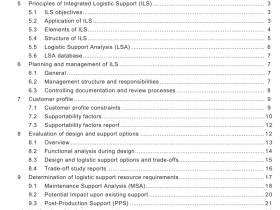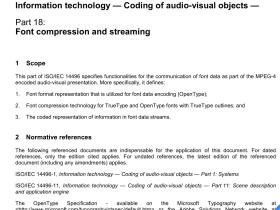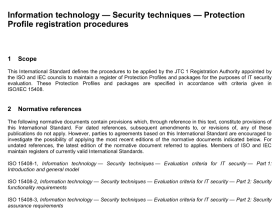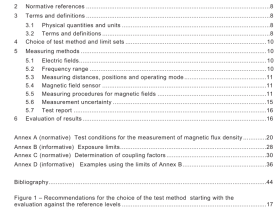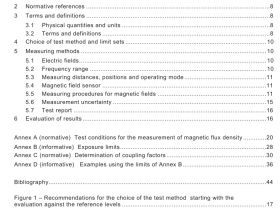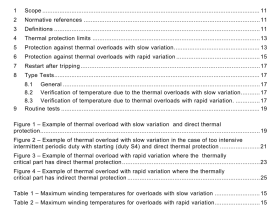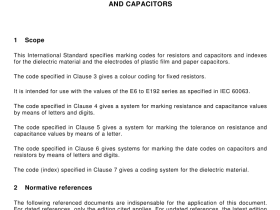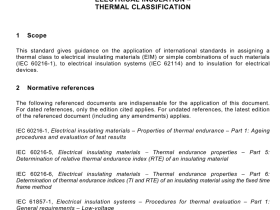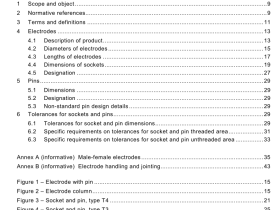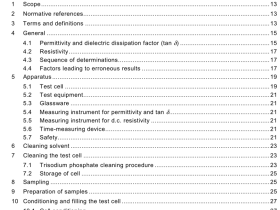IEC 60228 pdf download
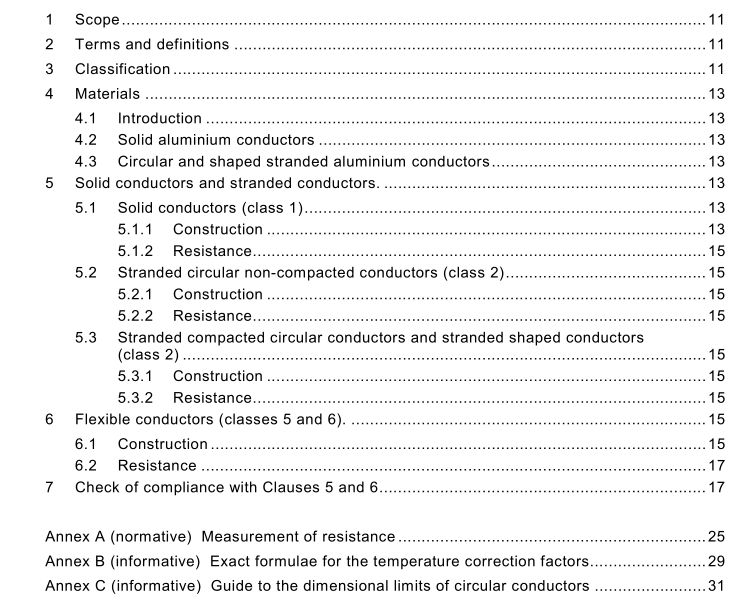
IEC 60228 pdf download Conductors of insulated cables
1 scope
This International Standard specifies the nominal cross-sectional areas, in the range 0,5 mm2to 2 500 mm2, for conductors in electric power cables and cords of a wide range of types.Requirements for numbers and sizes of wires and resistance values are also included. Theseconductors include solid and stranded copper,aluminium and aluminium alloy conductors incables for fixed installations and flexible copper conductors.
The standard does not apply to conductors for telecommunication purposes.
The applicability of this standard to a particular type of cable is as specified in the standard forthe type of cable.
Unless indicated to the contrary in a particular clause, this standard relates to the conductors inthe finished cable and not to the conductor as made or supplied for inclusion into a cable.
Informative annexes are included giving supplementary information covering temperaturecorrection factors for resistance measurement (Annex B) and dimensional limits of circularconductors (Annex C).
2Terms and definitions
For the purposes of this document, the following terms and definitions apply.
2.1
metal-coated
coated with a thin layer of suitable metal,such as tin or tin alloy
2.2
nominal cross-sectional area
value that identifies a particular size of conductor but is not subject to direct measurementNOTE Each particular size of conductor in this standard is required to meet a maximum resistance value.
3Classification
The conductors have been divided into four classes,1,2,5 and 6. Those in classes 1 and 2are intended for use in cables for fixed installations. Classes 5 and 6 are intended for use inflexible cables and cords but may also be used for fixed installations.
– Class 1: solid conductors.
– Class 2: stranded conductors.
– Class 5: flexible conductors.
4 Materials
4.1 Introduction
The conductors shall consist of one of the following:
− plain or metal-coated annealed copper;
− aluminium or aluminium alloy.
4.2 Solid aluminium conductors
Circular and shaped solid aluminium conductors shall be made from aluminium such that the tensile strength of the completed conductor is within the following limits:
NOTE The values given above are not applicable to aluminium alloy conductors.
4.3 Circular and shaped stranded aluminium conductors
Stranded aluminium conductors shall be made from aluminium such that the tensile strength of the individual wires is within the following limits:
NOTE 1 The values given above are not applicable to aluminium alloy conductors.
NOTE 2 This data can only be checked on wires taken before stranding and not on wires taken from a stranded conductor.
5 Solid conductors and stranded conductors
5.1 Solid conductors (class 1 )
5.1.1 Construction
a) Solid conductors (class 1 ) shall consist of one of the materials specified in Clause 4.
b) Solid copper conductors shall be of circular cross-section.
NOTE Solid copper conductors having nominal cross-sectional areas of 25 mm 2 and above are for particular types of cable, e.g. mineral insulated, and not for general purposes.
c) Solid aluminium and solid aluminium alloy conductors of sizes 1 0 mm 2 to 35 mm 2 shall be of circular cross-section. Larger sizes shall be of circular cross-section for single-core cables and may be of either circular or shaped cross-section for multi-core cables.
